
How to Use 9-40V to 6V3A step down converter: Examples, Pinouts, and Specs
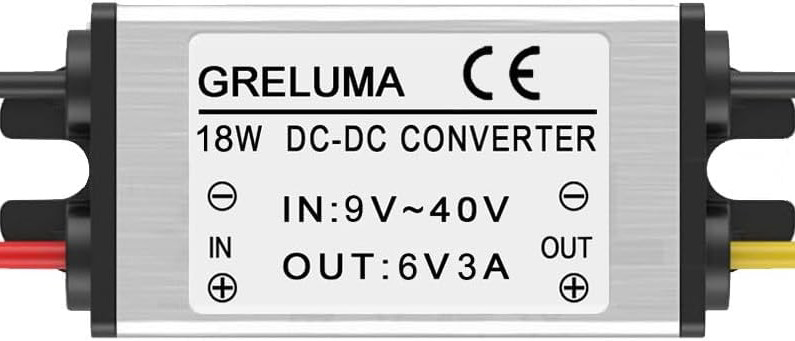
 Design with 9-40V to 6V3A step down converter in Cirkit Designer
Design with 9-40V to 6V3A step down converter in Cirkit DesignerIntroduction
The Greluma ZL963LUM is a high-efficiency DC-DC step-down converter designed to reduce an input voltage range of 9V to 40V to a stable output of 6V with a maximum current of 3A. This component is ideal for powering devices that require a lower voltage, such as microcontrollers, sensors, and small electronic devices. Its compact design and robust performance make it suitable for a wide range of applications, including automotive electronics, industrial equipment, and DIY projects.
Explore Projects Built with 9-40V to 6V3A step down converter
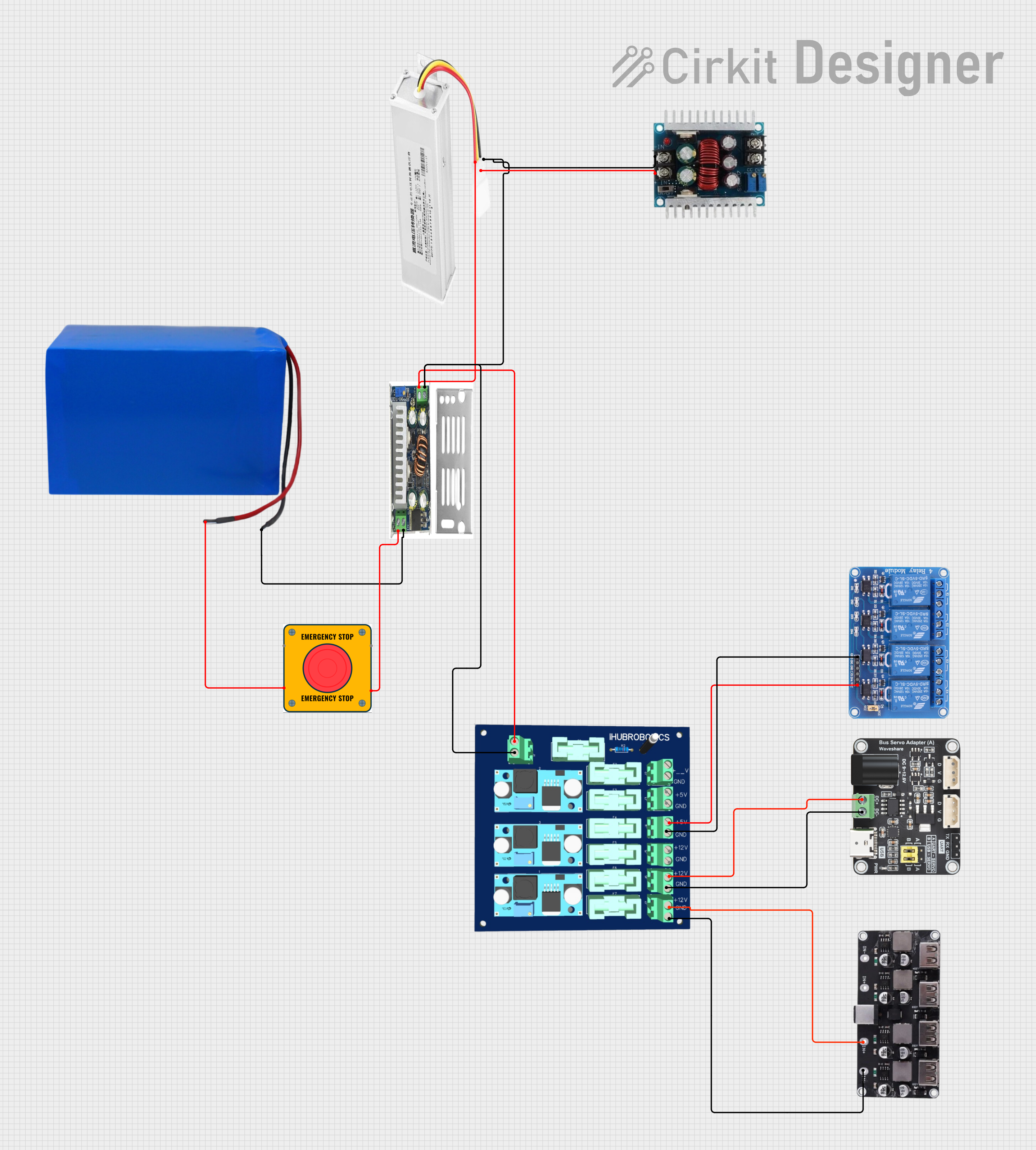
 Open Project in Cirkit Designer
Open Project in Cirkit Designer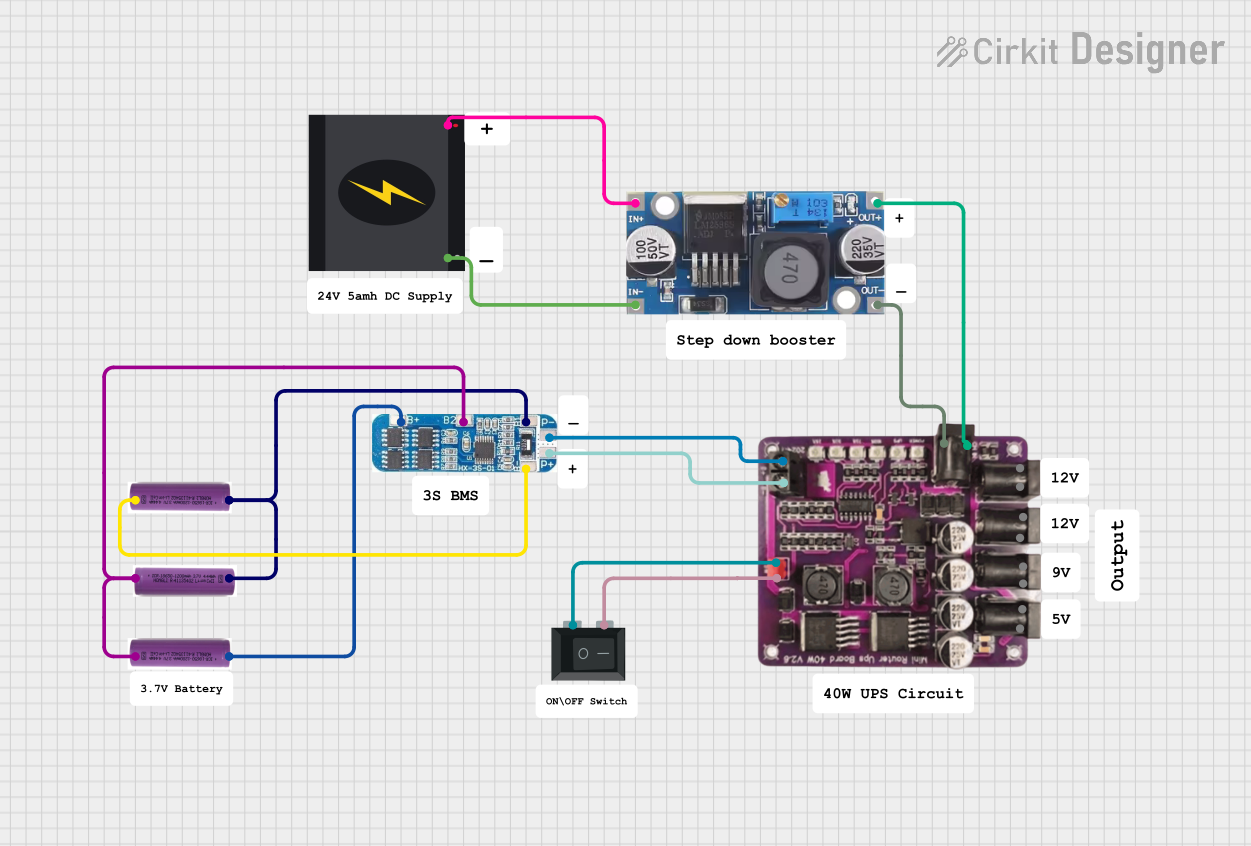
 Open Project in Cirkit Designer
Open Project in Cirkit Designer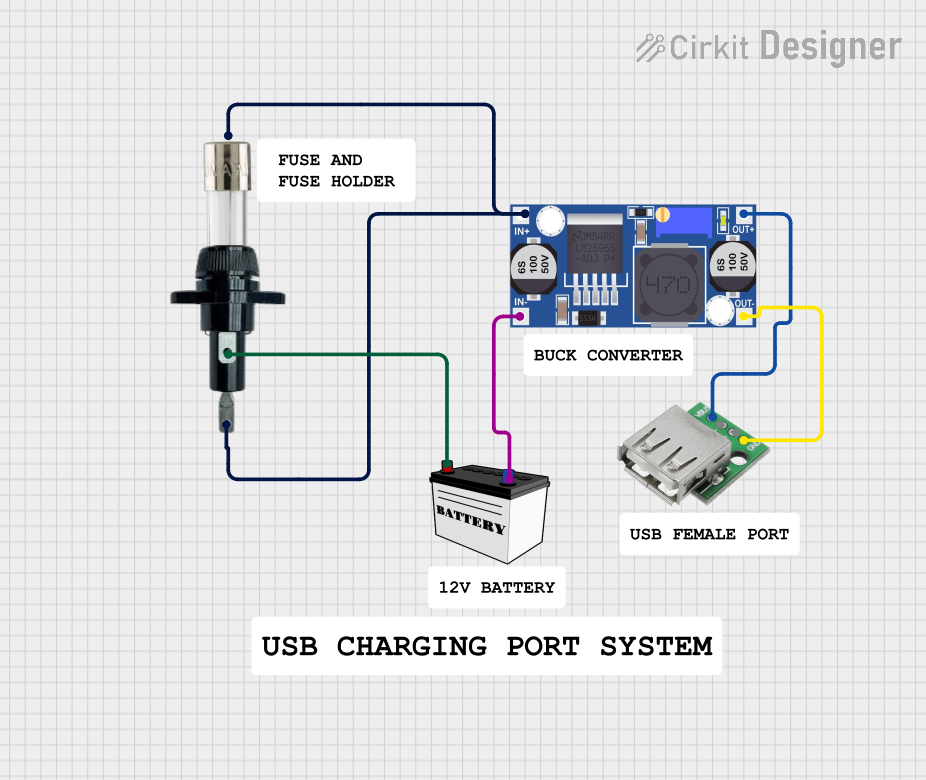
 Open Project in Cirkit Designer
Open Project in Cirkit Designer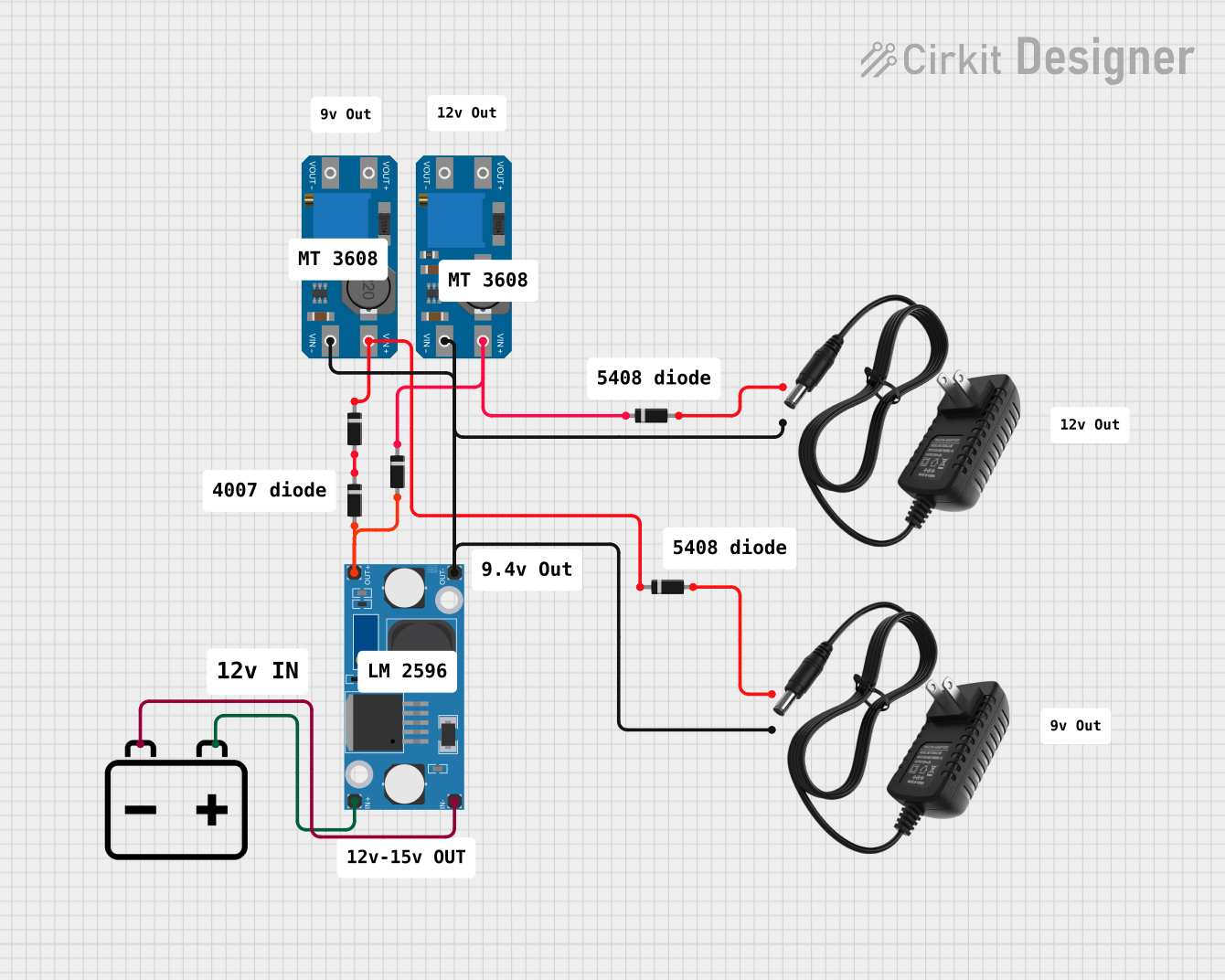
 Open Project in Cirkit Designer
Open Project in Cirkit DesignerExplore Projects Built with 9-40V to 6V3A step down converter

 Open Project in Cirkit Designer
Open Project in Cirkit Designer
 Open Project in Cirkit Designer
Open Project in Cirkit Designer
 Open Project in Cirkit Designer
Open Project in Cirkit Designer
 Open Project in Cirkit Designer
Open Project in Cirkit DesignerCommon Applications and Use Cases
- Powering microcontrollers (e.g., Arduino, Raspberry Pi) and sensors.
- Supplying stable voltage to LED strips or small motors.
- Automotive applications for converting car battery voltage to 6V.
- DIY electronics projects requiring a reliable 6V power source.
Technical Specifications
The following table outlines the key technical details of the Greluma ZL963LUM step-down converter:
| Parameter | Value |
|---|---|
| Input Voltage Range | 9V to 40V |
| Output Voltage | 6V |
| Maximum Output Current | 3A |
| Efficiency | Up to 95% |
| Operating Temperature | -40°C to +85°C |
| Dimensions | 45mm x 25mm x 15mm |
| Weight | 20g |
Pin Configuration and Descriptions
The ZL963LUM has four pins for input and output connections. The table below describes each pin:
| Pin Name | Description |
|---|---|
| VIN+ | Positive input voltage terminal (9V to 40V). |
| VIN- | Negative input voltage terminal (ground). |
| VOUT+ | Positive output voltage terminal (6V). |
| VOUT- | Negative output voltage terminal (ground). |
Usage Instructions
How to Use the Component in a Circuit
- Connect the Input Voltage:
- Attach the VIN+ pin to the positive terminal of your input power source (9V to 40V).
- Connect the VIN- pin to the ground of your input power source.
- Connect the Output Voltage:
- Attach the VOUT+ pin to the positive terminal of the device you want to power.
- Connect the VOUT- pin to the ground of the device.
- Verify Connections:
- Double-check all connections to ensure proper polarity and avoid short circuits.
- Power On:
- Turn on the input power source. The converter will regulate the input voltage to provide a stable 6V output.
Important Considerations and Best Practices
- Input Voltage Range: Ensure the input voltage is within the specified range (9V to 40V). Exceeding this range may damage the converter.
- Heat Dissipation: At high currents, the converter may generate heat. Use proper ventilation or a heatsink if necessary.
- Load Requirements: Do not exceed the maximum output current of 3A to prevent overheating or damage.
- Polarity Protection: Double-check the polarity of input and output connections to avoid damage to the converter or connected devices.
Example: Using with an Arduino UNO
The ZL963LUM can be used to power an Arduino UNO by providing a stable 6V supply. Below is an example circuit and Arduino code to blink an LED:
Circuit Connections
- Connect the VIN+ and VIN- pins of the converter to a 12V DC power source.
- Connect the VOUT+ pin to the Arduino UNO's Vin pin.
- Connect the VOUT- pin to the Arduino UNO's GND pin.
- Connect an LED to pin 13 of the Arduino UNO with a 220-ohm resistor in series.
Arduino Code
// Simple LED blink example for Arduino UNO
// This code assumes an LED is connected to pin 13 with a 220-ohm resistor.
void setup() {
pinMode(13, OUTPUT); // Set pin 13 as an output pin
}
void loop() {
digitalWrite(13, HIGH); // Turn the LED on
delay(1000); // Wait for 1 second
digitalWrite(13, LOW); // Turn the LED off
delay(1000); // Wait for 1 second
}
Troubleshooting and FAQs
Common Issues Users Might Face
- No Output Voltage:
- Cause: Incorrect input voltage or loose connections.
- Solution: Verify that the input voltage is within the 9V to 40V range and check all connections.
- Overheating:
- Cause: Excessive load or poor ventilation.
- Solution: Ensure the load does not exceed 3A and provide adequate cooling.
- Output Voltage Fluctuations:
- Cause: Unstable input voltage or insufficient input filtering.
- Solution: Use a stable power source and consider adding a capacitor (e.g., 100µF) across the input terminals.
Solutions and Tips for Troubleshooting
- Check Polarity: Ensure the input and output connections are correctly polarized.
- Measure Voltages: Use a multimeter to verify the input and output voltages.
- Inspect for Damage: Look for signs of physical damage, such as burnt components or broken solder joints.
By following this documentation, users can effectively integrate the Greluma ZL963LUM step-down converter into their projects and troubleshoot common issues with ease.